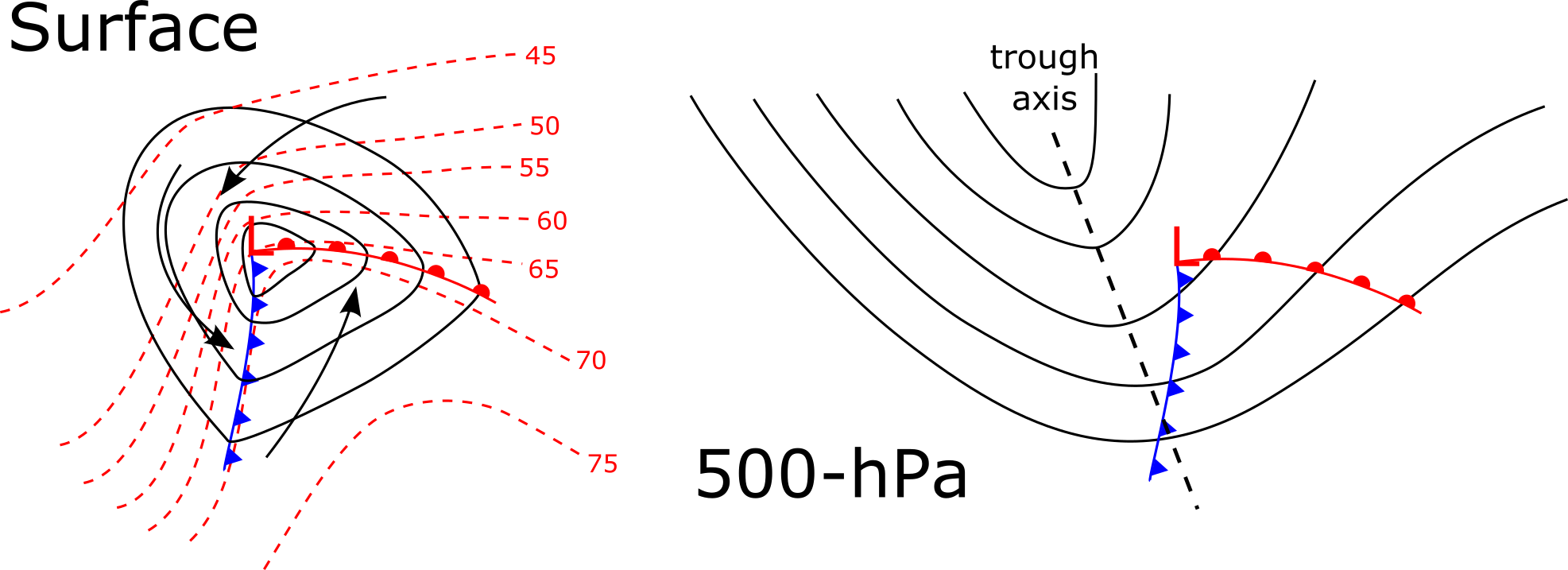15.5. Mature Stage#
The natural tendency for cyclones is to intensify (reduced surface mean sea-level pressure) due to the interaction between low-level temperature advection and upper-level troughs. As the cyclone matures, the temperature gradient will strengthen, the mean sea-level pressure will lower, and wind speeds will in general increase (Fig. 15.3).
During the mature stage our fronts will have the clearest definition through a combination of the temperature structure and wind shift being co-located (Fig. 15.3). The cyclone will be moving roughly along the direction of the isotherms to the east of the cyclone center.

Fig. 15.3 A schematic representation of the mature stage of a mid-latitude cyclone at the surface and 500 hP with location of low-level fronts for spatial reference.#
At 500 hPa, the trough has intensified further (Fig. 15.3). This dual intensification of the surface and upper-level pattern is called the self-development paradigm. If the surface (or near-surface) cyclone is positioned to the east of the upper-level trough, then the surface cyclone will continue to intensify. The overall tilt has decreased somewhat between the cyclogenesis and mature phase of the cyclone’s life cycle. However, some continued development would be expected with this orientation of surface and upper-level patterns.
